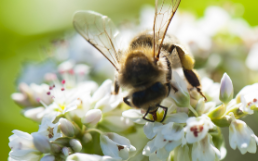It was found that traditional agroforestry systems – irrespective of type, region or composition – have the potential to make an important contribution to soil, climate and water protection – i.e. to deliver regulatory environmental services.

After just seven years, the agroforestry system in central Switzerland (apple trees and arable crops) had brought about a substantial humus enrichment of 18 per cent compared with the cultivated area, not only in the topsoil, but down to a depth of 60cm.
By contrast, no root competition was found between arable crops and tree strips in an eight-year-old agroforestry system (sown meadow, apple and pear trees). Owing to tillage of the arable land, the trees rooted exclusively in the tree strips as well as in deeper soil layers.

In Schwarzbubenland (canton of Solothurn and Basel Country), the pollinator species Bombus terrestris (buff-tailed bumblebee) and Osmia bicornis (red mason bee) benefitted from agroforestry systems with cherry trees and extensively-managed meadows owing to under-utilisation of the food supply for a long period of time over the year, and supported the investigated populations.

A tool box for modelling environmental services of the agroforestry systems within a landscape was developed using the example of standard fruit-tree cultivation in Schwarzbubenland.
Publications
Multimedia
SRF, Schweiz aktuell, 05.07.2010: Hochstammbäume: Eine alte Form von Landwirtschaft
Contact





